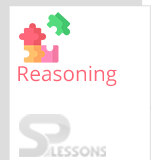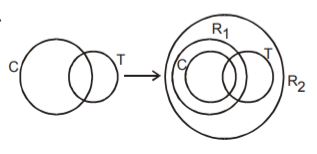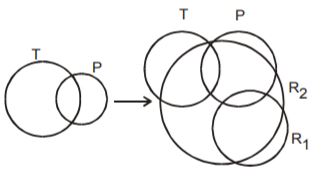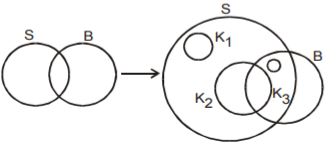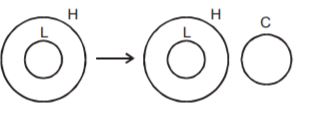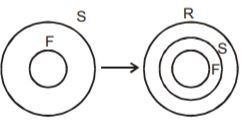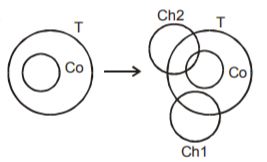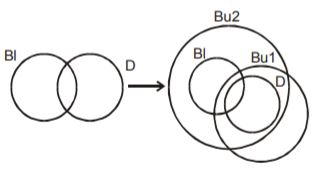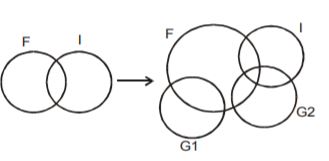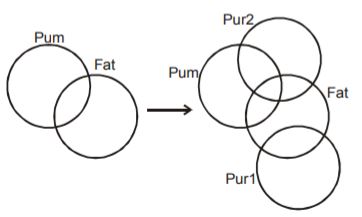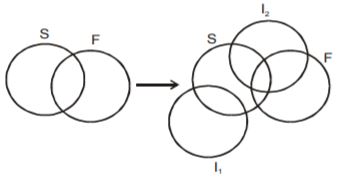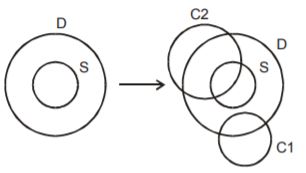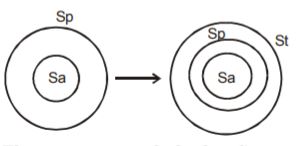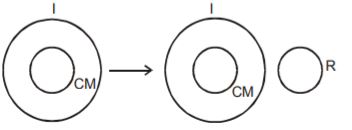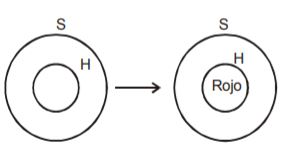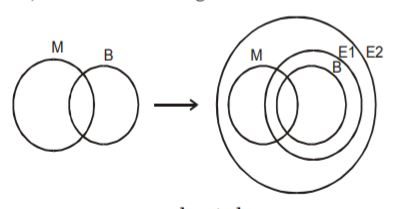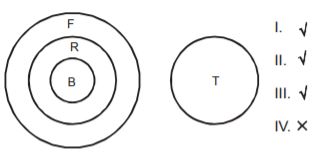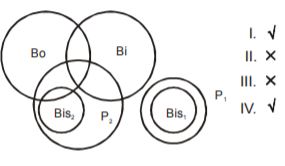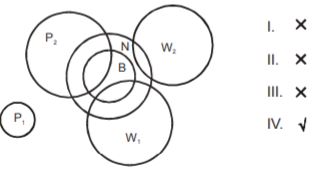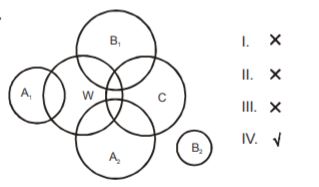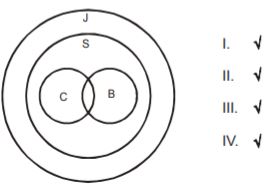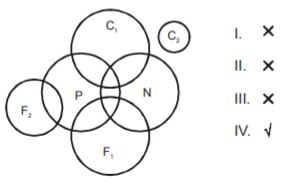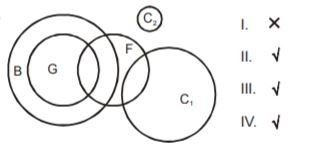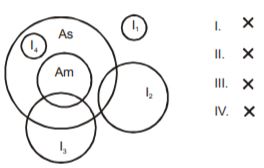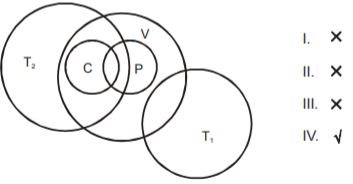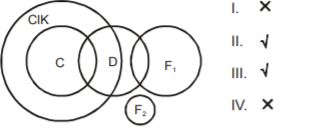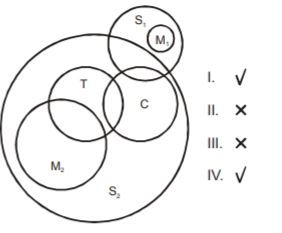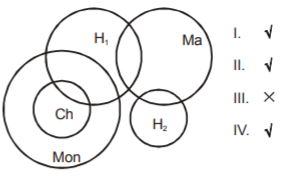 Introduction
Introduction
What is a Syllogism? A syllogism is a deductive argument relating two premises and a conclusion, all of which are quantified propositions, i.e. propositions joining concepts by using words such as 'some' and 'all'. In simple terms, Syllogism is a deductive argument that is primarily composed of 3 propositions. One of the propositions is used as the conclusion of the syllogism and the other two propositions are used as the premises of the syllogism. Deductive Logic is used to derive conclusions from premises where the truth of the conclusion must always be contained in the truth of the premises. Syllogism Practice Quiz presents Syllogism questions with solutions useful for candidates preparing for different competitive examinations like RRB ALP/Technical Exams/Junior Engineer Recruitment Exams, SSC CGL,SSC CHSL, IBPS, SBI PO, SBI Clerks, CAT and etc.
Syllogism is derived from the Greek word syllogismos, meaning conclusion or inference. Some syllogisms contain three components:
Major Premise
Minor Premise
Conclusion
Example: All roses are flowers (major premise). This is a rose (minor premise). Therefore, I am holding a flower (conclusion).
 Quiz
Quiz
Direction: (1 - 10)
You are required to choose from among the given four diagrams — (a), (b), (c) and (d) — the diagram that best illustrates a relationship among the three given classes in the questions.
- 1. Eatables, Meat, Venison
2. Criminals, Thieves, Murderers
3. Bachelors, Doctors, Husbands
4. Food, Spaghetti, Oven
5. Food, Rice, Belt
6. Beverages, Liquor, Juice
7. Matter, Solid, Gas
8. Chair, Table, Furniture
9. Cutlery, Spoon, Chair
10. Croissants, Baked eatables, Brown bread
- A.
B.
C.
D.
- Some clouds are thunder.
All clouds are rain.
- I. Those clouds which are not thunder, are also rain.
II. Those clouds which are not thunder, are not necessarily rain.
- A. if only conclusion I follows
B. if only conclusion II follows
C. if both I and II follow
D. if neither I nor II follows
- Some tins are pens.
Some pens are rods.
- I. No rod is tin.
II. Some tins are rods.
- A. if only conclusion I follows
B. if only conclusion II follows
C. if both I and II follow
D. if neither I nor II follows
- Some sabres are bombs.
Key is a sabre.
- I. Some bombs are sabres.
II. Some keys are bombs.
- A. if only conclusion I follows
B. if only conclusion II follows
C. if both I and II follow
D. if neither I nor II follows
- All lenses are horns.
No horn is colorful.
- I. Some lenses are colorful.
II. No lens is colorful.
- A. if only conclusion I follows
B. if only conclusion II follows
C. if both I and II follow
D. if neither I nor II follows
- All flirts are smart.
All smart are rotten.
- I. All rotten are flirts.
II. All smarts are flirts.
- A. if only conclusion I follows
B. if only conclusion II follows
C. if both I and II follow
D. if neither I nor II follows
Direction: (1 - 15)
In each question, two statements are followed by two conclusions, I and II. You have to take the given two statements to be true even if they seem to be at variance with commonly known facts. Read the conclusions and then decide which of the given conclusions logically follows from the two given statements, disregarding commonly known facts.
1. Statements:
- All cots are tablets.
Some chimps are tablets.
- I. Some cots are chimps.
II. Some chimps are cots.
- A. if only conclusion I follows
B. if only conclusion II follows
C. if both I and II follow
D. if neither I nor II follows
- All willows are nettles.
Some trees are willows.
- I. Some trees are nettles.
II. Some trees are not nettles.
- A. if only conclusion I follows
B. if only conclusion II follows
C. if both I and II follow
D. if neither I nor II follows
- Some dolls blink.
All dolls burble.
- I. Those dolls which do not blink, also burble.
II. Those dolls which do not blink, don’t necessarily burble.
- A. if only conclusion I follows
B. if only conclusion II follows
C. if both I and II follow
D. if neither I nor II follows
- Some fools are intelligent.
Some fools are great.
- I. Some intelligent are great.
II. All great are intelligent.
- A. if only conclusion I follows
B. if only conclusion II follows
C. if both I and II follow
D. if neither I nor II follows
- Some pumpkins are fat.
Some fat are purple.
- I. Some fat are purple and pumpkins.
II. Some purple are pumpkins.
- A. if only conclusion I follows
B. if only conclusion II follows
C. if both I and II follow
D. if neither I nor II follows
- Some bosses are punctual.
Some punctual are genial.
- I. No genial is a boss.
II. Some bosses are genial.
- A. if only conclusion I follows
B. if only conclusion II follows
C. if both I and II follow
D. if neither I nor II follows
- Some sea-men are foolish.
Some sea-men are illiterate.
- I. All illiterate are foolish.
II. No sea-men are foolish.
- A. if only conclusion I follows
B. if only conclusion II follows
C. if both I and II follow
D. if neither I nor II follows
- All boys are heroes.
Sandy is a hero.
- I. Sandy is a boy.
II. All heroes are boys.
- A. if only conclusion I follows
B. if only conclusion II follows
C. if both I and II follow
D. if neither I nor II follows
- All great scientists are college dropouts.
Some criminals are college dropouts.
- I. Some criminals are great scientists.
II. All great scientists are criminals.
- A. if only conclusion I follows
B. if only conclusion II follows
C. if both I and II follow
D. if neither I nor II follows
- Sampans is a good sportsman.
Sportsmen are strong.
- I. All strong persons are sportsmen.
II. Sampans is strong.
- A. if only conclusion I follows
B. if only conclusion II follows
C. if both I and II follow
D. if neither I nor II follows
- All of my classmates are intelligent.
Ravinder is not intelligent.
- I. Ravinder is not my classmate.
II. Ravinder needs to sharpen up his brains.
- A. if only conclusion I follows
B. if only conclusion II follows
C. if both I and II follow
D. if neither I nor II follows
- All hippopotamus have skin.
Rojo is a hippopotamus.
- I. Rojo has skin.
II. Animals other than hippopotamus do not have skin.
- A. if only conclusion I follows
B. if only conclusion II follows
C. if both I and II follow
D. if neither I nor II follows
- Some sunglasses are blue.
Ray-Ban is a sunglasses.
- I. Some blue are sunglasses.
II. Some Ray-Bans are blue.
- A. if only conclusion I follows
B. if only conclusion II follows
C. if both I and II follow
D. if neither I nor II follows
- Some men are broad-minded.
Broad-minded people are educated.
- I. All educated people are broad-minded.
II. Some men are educated.
- A. if only conclusion I follows
B. if only conclusion II follows
C. if both I and II follow
D. if neither I nor II follows
- Some pious people are priests.
Joseph is a priest.
- I. Some priests are pious.
II. Joseph is pious.
- A. if only conclusion I follows
B. if only conclusion II follows
C. if both I and II follow
D. if neither I nor II follows
Direction: (1 - 15)
Directions for questions 1 to 15: I n each of the following questions, three statements 1, 2 and 3 are followed by four conclusions I, II, III, IV. You have to take the given statements to be true even if they appear to be at variance with commonly known facts, and then decide which of the conclusions logically follow(s) from the given statements. For each question, mark the answer choice that you think is correct
1. Statements:
- 1. All bibs are red.
2. All red are flowers.
3. No flowers are tablets.
- I. Some flowers are bibs.
II. No tablets are bibs.
III.Some red are bibs.
IV. Some tablets are red.
- A. I, II and III follow
B. II, III and IV follow
C. Only I and II follow
D. Only I and III follow
- 1. Some books are bibs.
2. All biscuits are pencils.
3. No bibs are biscuits.
- I. Some books are not biscuits.
II. Some bibs are not pencils.
III.Some books are not pencils.
IV. Some pencils are not bibs.
- A. I and IV follow
B. II and IV follow
C. I and III follow
D. II and III follow
- 1. All big are novels.
2. Some novels are willows.
3. No willows is pencil.
- I. Some willow are big.
II. Some novels are pencils.
III. No willow is big.
IV. Some novels are not pencils.
- A. I and either II or IV follow
B. I, III and IV follow
C. I, II and III follow
D. Only IV follows
- 1. Some whites are Canadians.
2. Some Americans are whites.
3. No American is a black.
- I. Some Canadians are Americans.
II. Some whites are blacks.
III.Some blacks are not Canadians.
IV. Some whites are not blacks
- A. I and IV follow
B. II and III follow
C. Only III follows
D. Only IV follows
- 1. All knots are tight.
2. No collar is tight.
3. Some bush-shirts are knots.
- I. Some bush-shirts are collars.
II. Some bush-shirts are tight.
III.Some collars are not bush-shirts.
IV. Some bush-shirts are not collars.
- A. Only II and III follow
B. Only II and IV follow
C. Both I & IV follows
D. Only IV follows
- 1. All crooked are spades.
2. All big are jaded.
3. Some big are crooked.
- I. Some jaded are crooked.
II. Some spades are crooked.
III.Some crooked are jaded.
IV. Some spades are big.
- A. I, II and III follow
B. II, III and IV follow
C. I, III and IV follow
D. All follow
- 1. Some people are nice.
2. Some foreigners are people.
3. No foreigner is a Canadian.
- I. Some foreigners are nice.
II. Some people are Canadians.
III.Some foreigners are not nice.
IV. Some people are not Canadians.
- A. Both II and III follow
B. Both III and IV follow
C. Both IV and I follow
D. Only IV follows
- 1. All goats are boxes.
2. Some goats are flowers.
3. No chocolate is box.
- I. Some flowers are chocolates.
II. No goats are chocolates.
III.Some flowers are boxes.
IV. Some flowers are not chocolates.
- A. II, III and IV follow
B. I, III and IV follow
C. Only II and III follow
D. Only III follows
- 1. Some Indians are not Americans.
2. All Americans are Asians.
3. Some Asians are Americans
- I. Some Indians are not Asians.
II. All Americans are not Indians.
III.All Americans are Indians.
IV. Some Americans are Indians.
- A. Only I follows
B. Only II follows
C. Only III follows
D. None follows
- 1. Some candies are papers.
2. All papers are vanillas.
3. Some vanillas are trams.
- I. Some candies are trams.
II. Some papers are trams.
III.Some trams are papers.
IV. Some vanillas are candies.
- A. Only II and III follow
B. I and IV follow
C. Only IV follows
D. II, III and IV follow
- 1. No foods are mangoes.
2. No oranges are potatoes.
3. All mangoes are oranges.
- I. Some foods are not oranges.
II. Some oranges are not foods.
III. No mangoes are potatoes.
IV. Some oranges are foods.
- A. Only III and I follow
B. Only II and IV follow
C. Only I and II follow
D. Only II and III follow
- 1. Some cots are docks.
2. All cots are clocks.
3. No frock is clock.
- I. No frock is a dock.
II. No frock is a cot.
III.Some docks are not frocks.
IV. Some docks are frocks.
- A. Both III and IV follow
B. Both I and II follow
C. Both II and III follow
D. I, II and III follow
- 1. Some tumblers are capsules.
2. No capsule is a medicine.
3. All medicines are syrups.
- I. Some tumblers are not medicines.
II. No medicine is a tumbler.
III.Some syrups are capsules.
IV. Some syrups are not capsules.
- A. I, II and III follow
B. I, III and IV follow
C. II, III and IV follow
D. I and IV follow
- 1. All coats are paints.
2. No paints are shirts.
3. Some shirts are vests.
- I. Some vests are shirts.
II. Some coats are shirts.
III. No coat is a shirt.
IV. Some vests are not coats.
- A. I, II and III follow
B. I and IV follow
C. I and III follow
D. I, III and IV follow
- 1. All chimps are monkeys.
2. No monkeys are mammals.
3. Some horses are mammals.
- I. Some horses are not chimps.
II. Some horses are not monkeys.
III.Some monkeys are not chimps.
IV. No chimp is a mammal.
- A. I, III and IV follow
B. II, III and IV follow
C. II and IV follow
D. I, II and IV follow
